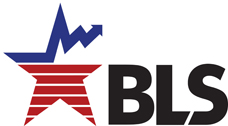Todd, yes, Adjustable-Rate Mortgages (ARMs) can indeed be predatory, especially when they are marketed to borrowers who do not fully understand the risks involved. These loans often start with a "teaser" rate that is attractively low but then adjust to much higher rates, sometimes even doubling the monthly payments. Many borrowers were not properly informed of how quickly or how much their payments could increase. Financial institutions took advantage of these borrowers, knowing they were unlikely to be able to handle the sudden spike in payments, which led to widespread defaults. The predatory nature comes from the exploitation of borrowers' lack of understanding and the strategic placement of them into loans that would eventually become unaffordable.
Issuing securities is regulated, but the key issue here is not just about regulation in theory, it's about how effectively those regulations were enforced and what was actually allowed under the deregulated framework. During the lead-up to the crisis, the financial products created from these subprime loans, like Mortgage-Backed Securities (MBS), were often given misleadingly high ratings by credit rating agencies. The lack of stringent oversight allowed these risky products to be sold as safe investments, spreading the toxic risk across the entire financial system. The regulations in place were either insufficient or not properly enforced, allowing the financial industry to manipulate these products with disastrous consequences.
Todd, it's not about whether Glass-Steagall would have prevented the creation of bad mortgages, it's about how it would have limited the scope of their impact. Glass-Steagall enforced a separation between commercial banking (where deposits and loans are handled) and investment banking (which involves riskier activities like securities trading). Without this separation, commercial banks were able to use depositor funds to engage in risky investments, including the securitization of subprime loans. This blending of banking activities under the same roof meant that when those bad mortgages were securitized and spread throughout the global economy, the risk was magnified exponentially. Glass-Steagall’s repeal didn't cause the loans to be made, but it allowed the fallout from those loans to wreak havoc on the financial system.
While it's true that Glass-Steagall wouldn't have stopped these entities from buying and securitizing mortgages, the broader point is that the repeal of Glass-Steagall facilitated a systemic failure. It allowed commercial banks, which handle depositor money and provide loans, to get deeply involved in investment banking activities like securitization. This mingling of activities amplified the risks and connected the commercial banking sector directly to the fallout from these high-risk investments. In other words, Glass-Steagall's repeal created an environment where the damage from risky practices could, and did spread far beyond isolated institutions, affecting the global economy.
Todd, you're missing the point here. The crisis wasn't just about the quality of the loans, although that was certainly a factor. The real issue was how these "shitty loans," as you put it, were packaged into supposedly low-risk securities and sold to investors around the world. These MBS were given AAA ratings by credit agencies, even though they were filled with toxic, high-risk subprime loans. This misrepresentation spread the risk globally, as institutions and investors believed they were purchasing safe assets. The systemic risk was not just in the bad loans themselves but in the way they were fraudulently marketed and sold as secure investments.
The issue isn't about where the losses occur but how they occur. If the risks had been contained within the institutions that created them, the fallout might have been severe but localized. By spreading the risk globally through securitization, the financial system ensured that when things went wrong, the impact would be felt everywhere, exacerbating the crisis. This global spread of risk made the situation far more difficult to manage and more damaging to the world economy, which is why it led to such a profound and prolonged economic downturn.
Fannie Mae and Freddie Mac certainly played a role in the crisis by purchasing subprime mortgages, but they were far from the only culprits. Private institutions were equally, if not more, involved in the aggressive pursuit of subprime lending and securitization. According to the Financial Crisis Inquiry Commission, Fannie and Freddie were involved in about 20% of subprime purchases, but private firms were responsible for the vast majority of these toxic assets. The crisis was a systemic failure involving many players, and focusing solely on Fannie and Freddie is an attempt to oversimplify and misdirect blame.
While there were certainly policies that encouraged homeownership, the primary issue wasn't too much regulation, it was the wrong kind of regulation combined with a lack of enforcement. Deregulation, particularly the repeal of Glass-Steagall, allowed financial institutions to take risks that they never would have been able to take under a properly regulated system. The greed of the private sector was a driving force, fueled by a deregulated environment that prioritized short-term profits over long-term stability. This is the real story behind the 2008 financial crisis, and ignoring these factors is a dangerous oversimplification.
